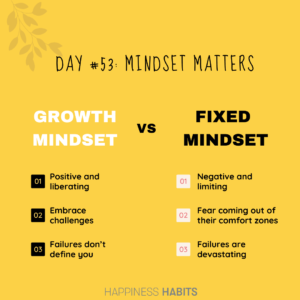Recent times have reiterated the importance of adaptability at the workplace and on the personal front. Change is the only inevitable constant. Yet, we resist change. A futile exercise, but the most common first reaction to a transformation, is resistance. Whether you exhibit overt or covert resistance, change you must. But have you ever wondered how some people don’t find change challenging? They seem to waltz their way into anything new effortlessly. Well, they aren’t blessed with extra adaptability genes. It is just the mindset at play. Yes, Mindset Matters for a happier life. Let’s dive into what mindset is and how to go from a fixed and negative mindset to a positive and growth mindset.
We have all grown up reading comics and storybooks on superheroes, but what gets imprinted in our subconscious is that superheroes are blessed with superpowers! We fail to see the mindset, beliefs, self-motivation to stay positive under any circumstance, solution-oriented, growth-oriented, and success mindset.
But now that we are past the awestruck, wonderstruck age, can we look at things more clearly? Because ultimately, we are where we are, not just due to abundance or lack of talent but also to beliefs about our capabilities.
So what exactly is Mindset?
Mindset is nothing but our beliefs.
Our belief systems influence our ability to achieve success and happiness. Belief systems are the foundation of our lives, and they shape how we see the world, what we do, and how we feel about ourselves.
Point to ponder:
“Everyone thinks of changing the world, but no one thinks of changing himself.”
― Leo Tolstoy
Mindset Types:

Stanford psychologist Carol Dweck believes that people either have a growth or fixed mindset.
People who believe their talent and intelligence are innate, something they are born with and cannot change, belong to the Fixed Mindset type. They believe that talent alone takes people places. So, you either have it in you or don’t, simple. Such people constantly feel the need to prove themselves and worry about how the world perceives them.
A person with a fixed mindset:
- Avoids challenges
- Gives up on the first obstacle encountered
- Thinks it is futile to put in efforts
- Cannot take criticism constructively
- Finds others’ success threatening
A Growth Mindset is a way of thinking that encourages continued learning, even in the event of setbacks. It is a belief that one can develop intelligence and skills through dedication and hard work—rather than being fixed traits. Such people are highly resilient, have a deep love for learning, and are self-starters. This group of people is only focused on improving themselves.
A person with a growth mindset:
- Is curious and thrives on challenges
- Is resilient and persists through setbacks
- Believes in constant learning
- Seeks feedback as a way to mastery
- Takes inspiration from others’ success stories
The critical thing to remember is that there are things under our control and things we cannot control, like the weather, traffic, and other unforeseeable events. The essence of a growth mindset lies in how we respond to elements in our control.
If you find neuroscience fascinating, you may want to read up on how to rewire and reprogram your brain through pattern interrupt.
Yes, Mindset Matters and You can Change It. Here’s how…
The good news is…
“Your only limitation is the one you set up in your own mind!”
― Napoleon Hill
So let’s see how to go from a fixed and limiting belief to a liberating growth mindset for a happier life.
1) Awareness: Understand the difference between a growth and a fixed mindset. Take a step back and analyze your current situation and mindset. What are your thought patterns and limiting beliefs? Be honest and list out your thought barriers.
2) Acknowledgment: Hear your fixed mindset voice and accept that mindset matters. It is a crucial step in developing a growth mindset. What you acknowledge, you can change because you understand you have a CHOICE.
3) Embrace Growth: Don’t stagnate. Reframe your thoughts consciously to make that shift. Take stock of your current situation and embrace change instead of resisting it. See opportunities in challenges and setbacks. Be solution-oriented; expand your thoughts to “I can” from “I can’t” to expand your capabilities. Constantly replace negative thoughts with positive ones.
4) Action: Finally, put your new growth mindset into action. Set goals and start taking steps to accomplish them. Cross those obstacles, find those solutions, think positive, and find more unique avenues to achieve your goals.
The Takeaway
Through conscious awareness and repetition, assert and affirm a growth action every time you encounter a fixed mindset. Acknowledge that change is possible, that there is a solution, success, and happiness on the other side. You have it in you to crossover.
Remember, our mindset significantly impacts our capacity for happiness. Viewing challenges, obstacles, and setbacks as a springboard to learn and grow can help you lead a happy, fulfilling, and successful personal and professional life. This is where mindset matters.
Break those barriers from years of conditioning and progress towards a more fulfilling life experience, the Happiness Habits Way. For more exclusive guidance, join our curated membership area.